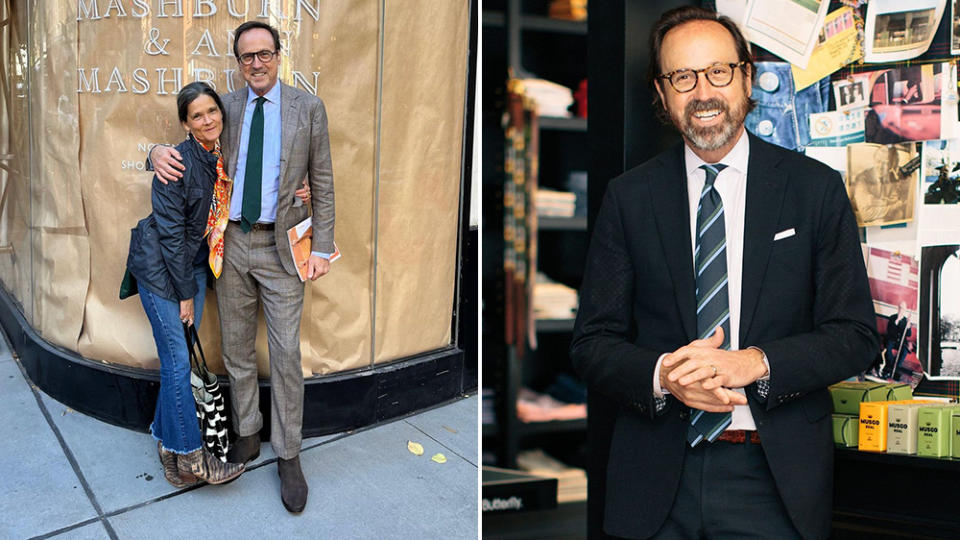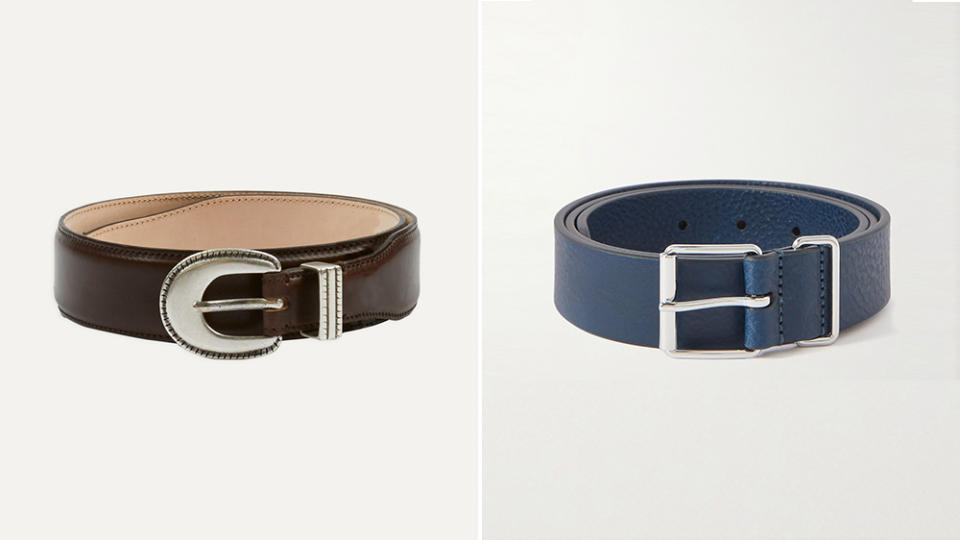How to Wear Belts With Suits Correctly, According to Menswear Pros

Among a certain class of clothes-conscious men, there’s a consensus that wearing a belt with a suit is a faux pas. It’s taken for gospel that such a rookie move betrays a lack of familiarity with the superior alternatives of side adjusters and suspenders, which manage to hold up trousers without cutting the body in half.
But what if these men are… wrong?
More from Robb Report
Formula 1 Champ Jenson Button on Climate Change, Mental Health and the Power of a Good Suit
Back in Black: Why the Tailoring World Is Making Suits in the World's Most Rebellious Color Again
As creative director of the New York City custom clothier J. Mueser, Matthew Woodruff (above) knows his way around tailoring. And yet he sometimes chooses to style a worsted wool suit or a two-piece Donegal tweed with a thin leather belt. In his view, successfully matching belts to suits is a question of intentionality—and harmony.
“When wearing a belt with a suit it should look like a conscious decision and complement the entire outfit,” he tells Robb Report. “A more refined buckle and a slimmer belt is one example of how to do so.”
While acknowledging that the combination gets a bad rap, he believes it’s a case of the wrong belt being paired with the wrong suit. “Guys often get suits with belts wrong by not being considerate of the material, color and scale of the belt for the suit—such as wearing a belt that’s too bulky for lighter-weight cloths, distracting from the total ensemble,” he continues.
To try and thread this needle, J. Mueser has developed a belt with a moderate width and a more refined, Western-inspired buckle. Woodruff also recommends belts from the Italian maker Anderson’s, as well as engine-turned buckles from Scully & Scully that can be fitted to a variety of straps.

Belts with suits have always been welcome at Sid Mashburn, which stocks a dizzying array of belts from dressy bridle leather to a hairy zebra hide. The varied selection is in keeping with its founder’s thoughts on the subject, which requires a close examination of the belt’s qualities. “Width, stitch or no stitch, color, texture, buckle—all of those things go into what I’m considering,” Mashburn tells Robb Report.
And while he considers every factor, from the contrast of the belt’s color against the suit’s fabric (“I want it to hook up with the shoes, but I also don’t want it to be too contrasty”) to its backing, he pinpoints one factor as a particular make-or-break: width.
“We are very guilty of having a narrow point of view on belts… But I think that the general rule of thumb is, if you’re comfortable with a narrower belt—we love an inch, but if not, an inch and a quarter will be fine.”
But just as the appropriateness of a belt must be considered, so must a suit be judged for where it falls on the formality scale. Mashburn offers his own tailoring taxonomy, consisting of “country suits,” “city suits,” “boardroom suits” and “summer play suits,” all of which allow for different belt-pairing opportunities. For instance, Mashburn believes that a leather belt with an unlacquered brass plaque buckle is versatile enough to play with “boardroom” or “country” suits alike, while an African beaded belt is strictly for the “summer play” category, particularly at weddings.

Drake’s creative director Michael Hill similarly takes the styling and appearance of the suit into question. “It should be on the smart, but not entirely formal side,” he tells Robb Report, suggesting his label’s workwear-inspired Games tailoring as “An example of a suit that sits somewhere in between and works particularly well with belts.”
As for their complement, Hill points to the brand’s recently introduced Western belts. “Made in Italy from some wonderful cuts of leather, the hand-finished brass buckle is ornate, without veering into cowboy-fancy dress territory.”
But understanding that even a moderated Western belt won’t be for everyone, he also offers the example of webbing belts, which match bridle leather accents to an Ivy-inspired striped cotton-poly fabric. “A bit more colorful than traditional leather belts, but equally as useful.”
If done correctly—and with thought—a belt won’t be a subtraction from the suit’s look, but rather, a plus. “For the same reasons a belt can often look out of place with a suit it can also be of value, making a two-piece suit feel more casual and familiar,” Woodruff says.
Casual and familiar: two qualities the suit may benefit from as it continues to find its post-pandemic footing. And if the occasional belt can help provide that, all the better.
Best of Robb Report
Sign up for Robb Report's Newsletter. For the latest news, follow us on Facebook, Twitter, and Instagram.

